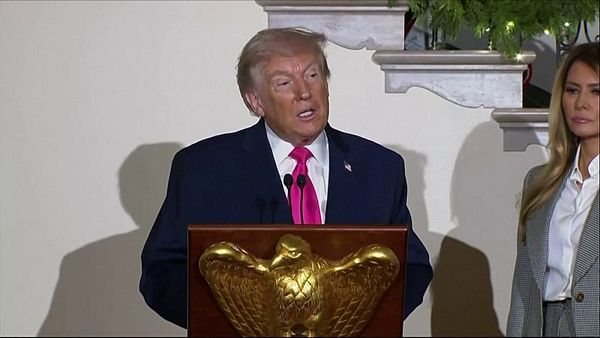
Over the last year, close readers of Chinese media might have noticed stories about a new Chinese polar icebreaker vessel, conducting research and supply missions in both the Arctic and Antarctic. The Xuelong 2, or the “Snow Dragon 2,” was designed with the Finnish engineering company Aker Arctic and built in Shanghai’s Jiangnan Shipyard.
The vessel was laid down at the end of 2019 and has since become front-and-center of China’s global effort to project soft power symbols. The Global Times proclaimed the ship’s maiden journey to China’s sci-tech capital Shenzhen in October 2019, after which it would join its forebear Xuelong to travel to the Antarctic.
Since then, the Xuelong 2 has appeared frequently on the pages of China’s state-owned Xinhua, which has been describing its exploits in the Polar South for Chinese and international readers.
Tensions in the Polar North
China’s polar expeditions have raised some eyebrows given its increasingly aggressive actions abroad in the last decade. In light of recent tensions on the China-India border, The New Delhi Times took the opportunity to declare: “China spreads its fangs across Arctic.”
Former U.S. intelligence analyst Jim Danoy argued that Beijing has been taking advantage of Iceland’s increased political and economic distance from the European Union by signing a free trade agreement in 2013 to establish closer Arctic ties.

Likewise, China’s establishment of its Yellow River research station in Norway’s Svalbard peninsula is of concern, not to mention a vetoed attempt to set up another station under the guise of a tourist resort. The U.S. Department of Defense’s reports to Congress, Danoy wrote, have made the case that China’s deployment of civilian research vessels to the Arctic regions might lead to a spread in its naval activities, considering the historical presence of Russian and American nuclear submarines in the region.
The central question surrounding the Xuelong 2 seems to be whether it is an innocuous display of China’s soft power or signals geopolitical storms to come. China’s role in the Polar North, in particular, has grown since joining the Arctic Council as an observer in 2013, later proclaiming itself a “near Arctic state.”
The history of China’s polar interest
What is overlooked, however, is China’s long history of polar exploration. The original Xuelong icebreaker was built in a Ukrainian shipyard and completed in 1994, and it has been in continuous service ever since. The Xuelong’s history is a reflection of the changes that have occurred in China’s polar policy over the last 30 years. Overseen by the China Arctic and Antarctic Administration, the Xuelong expeditions are part of a larger singular polar policy.
The Xuelong’s earliest trips included an infamously unannounced voyage to Canada in 1999, and another to the Svalbard peninsula where it helped set up the Yellow River station. Much of its recent activity involved re-supply expeditions to Chinese scientists in the Antarctic at the Zhongshan Station.
Throughout the 1980s, prior to the purchase of the Xuelong, China was unable to undertake self-sufficient expeditions to conduct research. Rather, it relied on cooperation with countries like Australia, which claims 45% of the Antarctic territory, to conduct joint expeditions. China named the earliest of these CHINARE (Chinese National Antarctic/Arctic Research Expedition), which it uses to this day and has imprinted on the hulls of both Xuelong vessels.
The development of the Xuelong therefore represented a coup in China’s polar presence, allowing CHINARE expeditions to be undertaken independent of the assistance of other nations. Better yet, China was now able to offer seats to Russian, Korean, Japanese, Taiwanese, and Hong Kong scientists, helping to amplify Asia’s research presence in the polar regions, promoting the work of the Asian Forum of Polar Sciences. The Xuelong has since been involved in the rescue of the Russian vessel Akademik Shokalskiy in 2013–2014 and was famously involved in the search for the MH370 in the Indian Ocean.
Changing winds
The 2010s however have seen major shifts in China’s polar policy. Chief among these is the 2018 publication of the Arctic White Paper by the Chinese State Council in which it spells out the PRC’s intentions in the Polar North, including the development of new commercial shipping routes as Arctic ice melts or what it has called a “Polar Silk Road.” This importantly coincided with the completion and laying down of the Xuelong 2, which will represent a division of labor between the two vessels, one perhaps focusing on the North and the other on the South.
However, the foreign policy trajectory of Xi Jinping’s government, in which he has fervently pursued an enlarged presence in global affairs for China, raises greater concerns over the Xuelong ambitions. Much of this was foreshadowed by Xi’s 2014 visit to the Australian state of Tasmania, which aimed to establish Australia as a gateway for Chinese Antarctic expeditions.
We may thus be witnessing a new watershed in Chinese polar diplomacy. This is all the more important considering rumors of China’s construction of a third nuclear-powered icebreaker, technology which up to now has only been in possession of Russia.
It is largely through the activities of CHINARE that the PRC has been able to make a gradual but bold entry into the Arctic and Antarctic using scientific research as a way to establish a presence in these regions. The Xuelong 2’s potential in furthering Chinese research may have significant impacts on political changes already taking place in two regions of crucial strategic importance.
READ NEXT: In US-China Conflict, What Is the End Game for Taiwan?
TNL Editor: Daphne K. Lee, Nicholas Haggerty (@thenewslensintl)
If you enjoyed this article and want to receive more story updates in your news feed, please be sure to follow our Facebook.








